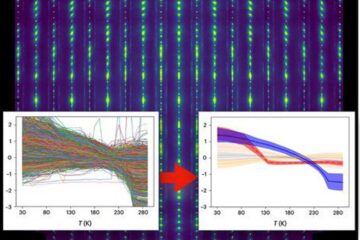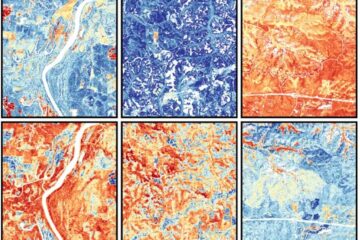Molecular trigger defects for muscle growth & survival are genetic cause of human heart failure

Researchers at the University of California, San Diego (UCSD) School of Medicine have determined the molecular machinery that triggers normal cardiac muscle growth and survival, and have linked defects in this complex to an inherited form of human cardiomyopathy, a type of heart failure where an enlarged heart loses its ability to pump blood.
Published in the December 27, 2002 issue of the journal Cell, the study also identifies a subset of German cardiomyopathy patients with a specific gene mutation that disrupts the heart muscle’s normal stretch activity. This mutation has apparently been passed down through several generations of Northern Europeans.
Masahiko Hoshijima, M.D., Ph.D., a co-first author of the paper and a lead project scientist in UCSD’s Institute of Molecular Medicine, explained that the normal heart contracts and relaxes with each cycle, stretching and then returning to an original size.
“In studies with mice, we found that the expansion of heart muscle activates molecular pathways that preserve function and prevent injury to heart-muscle cells during periods of increased workloads,” he said. “In humans, these increased workloads include high blood pressure, recovery from a heart attack, an overload of blood volume as a result of heart birth defects, or heart valve problems.”
A muscular scaffold, known as the cytoskeleton, serves as the sensor for mechanical stress on the heart, similar to a muscle version of a rubber band. When the rubber band is stretched, a cascade of signals are activated to prevent the rapid onset of heart failure.
The researchers determined that in some cases, cardiomyopathy develops due to defects in a portion of the heart’s scaffold, called the Z-disc complex, which ordinarily acts to trigger pathways that can lead to recovery of heart function. When this complex is defective, the heart loses the ability to adapt to the stress of increased mechanical stretch that occurs during each heartbeat.
Kenneth Chien, M.D., Ph.D., director of the UCSD Institute of Molecular Medicine and senior author of the paper, compared the enlarged heart muscle to enhanced arm, chest and leg muscles generated by pumping iron in the gym.
“When you lift weights, your body senses this mechanical stretch to the muscle and triggers a growth response,” he said. “In the heart, the Z disc contains molecular components that sense cardiac muscle stretch during normal contraction and relaxation. When there is a defect in this sensor mechanism – in this case, a Z disc gene called muscle-specific LIM protein (MLP) – the heart muscle can easily be injured during its daily workout, particularly if added ’weight’ or ’work’ is placed on it. This increased stress on the heart triggers pathways that lead to heart failure.”
MLP has been identified as playing a role in heart failure in previous studies in mice, but until the current findings, its precise mechanism of action in the heart was not known. The UCSD team believes that the discovery of the MLP-Z disc mechanism is an important part of the complex cardiac puzzle that should provide investigators with a template to find additional triggers of heart failure.
Located in the elastic Z disc complex that controls the normal stretch response of heart muscle, the defect in the MLP gene may be responsible for as much as 10% of inherited forms of cardiomyopathy in regions of Northern Europe. As most of the gene defects for this form of heart failure are due to separate mutations scattered throughout a diverse number of genes, the current discovery makes this the single largest mutation linked to this form of human heart failure, Chien said.
Using a variety of molecular techniques, the researchers found that a defect in MLP causes a misalignment of molecular components called telethonin and titin that maintain normal length of cardiac muscle cells during continuous cycling of cardiac contraction and relaxation. In mice bred without MLP, telethonin and titin became misaligned and disorganized. The complex was unable to sense the stretch stimulus and was unable to trigger critical growth and survival signals.
In a previous study by the Chien lab*, the researchers reported on a potential gene therapy that might correct heart failure in mice bred without MLP. In the current study reported in Cell, the scientists describe how they bred mice without MLP, and also without a heart protein called phospholamban (PLN). In these animals, the defect in the stretch sensor did not occur and hearts retained their normal size.
“Based on current and previous findings in our lab, we believe that the MLP deficiency could potentially be corrected with gene therapy using a modified form of PLN, which is known to regulate the strength of each heartbeat,” said Hoshijima, adding that animal studies with PLN are continuing.
The current paper also identified a group of human patients with the mutated gene. Using sophisticated genetic fingerprinting techniques with over 500 patients in a Berlin hospital, the investigators identified 10 who harbored the identical MLP gene defect. A study of more than 250 patients in Japan, however, found no cases of mutant MLP.
“These results suggest that the MLP mutation is a founder effect, which means there was a common, distant ancestor responsible for the gene defect that has been transmitted over many generations,” said the paper’s co-first author Ralph Knöll, M.D., and a research fellow in the Institute of Molecular Medicine.
In recent weeks, the researchers have identified the mutant MLP in cardiomyopathy patients of Northern European descent who reside in England, France, and the United States.
“Patients with defective MLP display clinical symptoms such as enlarged heart with thin ventricular walls, decreased contractility and impaired relaxation,” Knöll said. “This was similar to the MLP deficient mice we studied.”
Study co-investigator Heinz-Peter Schultheiss, M.D., director, Medizinischen Klinik II, Universitätsklinikum Benjamin Franklin in Berlin, noted that “further progress towards the elucidation of molecular pathomechanisms in dilated cardiomyopathy is urgently needed to improve the quality of life and the prognosis of this very large and important patient group. The current work by Knöll et al is one such important step towards the clarification of the molecular basis of dilated cardiomyopathy and may ultimately lead to novel molecular therapies for the disease.”
These studies were entirely funded by the LeDucq Foundation in Paris, France. Knöll was supported by the German National Science Foundation (DFG).
Co-author UCSD faculty and research staff from the following departments were: Hal M. Hoffman, M.D., Pediatrics and Medicine; Ilka Lorenzen-Schmidt, graduate student, Bioengineering; Marie-Louise Bang, Ph.D. and Hideo Yasukawa, M.D., Ph.D., Institute of Molecular Medicine and Medicine; Nicholas J. Schork, Ph.D., Psychiatry; Jeffrey H. Omens, Ph.D., Medicine and Bioengineering; Andrew D. McCulloch, Ph.D., Bioengineering. Additional co-authors were: Veronika Person, M.D., Wolfgang Schaper, M.D., Ph.D. and Jutta Schaper, M.D., Ph.D., Max-Planck Institute, Germany; Takeharu Hayashi, M.D., Ph.D. and Akinori Kimura, M.D., Ph.D., Tokyo Medical and Dental University, Japan; Nobuyuki Shiga, M.D., Ph.D. and Mitsuhiro Yokoyama, M.D., Ph.D., Kobe University Graduate School of Medicine, Japan; William McKenna, M.D., St. George’s Hospital Medical School, London; Carol C. Gregorio, Ph.D., University of Arizona, Tucson; and Wolfgang Poller, M.D., Freie Universität Berlin.
Additional Heart Failure and Cardiomyopathy Information from Dr. Schultheiss:
Congestive heart failure (CHF) due to impaired heart function is a serious condition with a poor prognosis and the need for repeated lengthy hospital stays despite optimal conventional pharmacological treatment. Dilated cardiomyopathy (DCM) is one of the most common causes of CHF. Any progress in the clarification of the molecular basis of DCM is of outstanding medical relevance, since better knowledge about molecular pathomechanisms leading to DCM may open ways to novel treatment options.
Both genetic and acquired causes of DCM have been identified. By genetically determined mechanisms, a number of single gene defects are known to cause DCM, whereas among the acquired causes chronic viral infections have been identified in large number of patients presenting with the clinical aspect of DCM. The evidence of a myocardial virus persistence in patients with DCM has lead to completely new therapy options.
“Based on pilot studies we are currently conducting a large international randomized multicenter-study using ß-Interferon to treat patients with virus- persistent DCM under the aspect of a causal therapy,” Schultheiss said.
News Media Contact:
Sue Pondrom
619-543-6163
spondrom@ucsd.edu
Media Contact
All latest news from the category: Health and Medicine
This subject area encompasses research and studies in the field of human medicine.
Among the wide-ranging list of topics covered here are anesthesiology, anatomy, surgery, human genetics, hygiene and environmental medicine, internal medicine, neurology, pharmacology, physiology, urology and dental medicine.
Newest articles

Machine learning algorithm reveals long-theorized glass phase in crystal
Scientists have found evidence of an elusive, glassy phase of matter that emerges when a crystal’s perfect internal pattern is disrupted. X-ray technology and machine learning converge to shed light…

Mapping plant functional diversity from space
HKU ecologists revolutionize ecosystem monitoring with novel field-satellite integration. An international team of researchers, led by Professor Jin WU from the School of Biological Sciences at The University of Hong…

Inverters with constant full load capability
…enable an increase in the performance of electric drives. Overheating components significantly limit the performance of drivetrains in electric vehicles. Inverters in particular are subject to a high thermal load,…





















